Transdisciplinary literacy: Seven principles that help define transdisciplinary research
Bill Dennison ·Following a three-day workshop on transdisciplinary research training, held 15-17 Feb 2017 in Paris, France, I reflected on the essential elements of transdisciplinary research. We spent much of our three days talking about what constitutes transdisciplinary research, and many concepts were discussed. This blog attempts to distill some of this discussion and to put forward a version of what constitutes transdisciplinary research. In addition, I enlisted Emily Nastase, our new Integration and Application Network Science Communicator, to help develop visualizations of various aspects of transdisciplinary, which are included here.
The seven transdisciplinary principles are the following:
- Transdisciplinary research is best applied to complex problems.
- Transdisciplinary research is place-based.
- Transdisciplinary research is time intensive.
- The term 'transdisciplinary' relates more to academia than to research partners (sometimes called stakeholders).
- Transdisciplinary research requires well-developed leadership skills.
- Transdisciplinary research is intensely collaborative.
- Transdisciplinary research merges multiple knowledge streams and different value systems to create new knowledge.
1. Transdisciplinary research is best applied to complex problems.
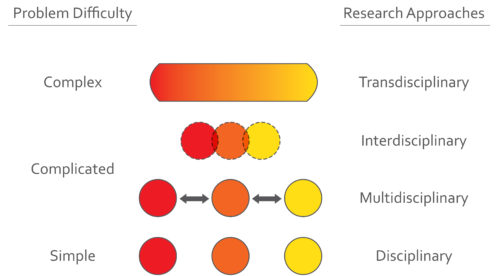
Problems can be classified in many different ways, as discussed in a previous blog [30 Mar 2011]: a) simple, complicated or complex (Glouberman and Zimmerman, 2002), b) puzzles, problems or messes (Pidd, 2003), c) tame or wicked (Churchman, 1967; Ritter and Webber, 1973) or superwicked (Levin et al., 2009). Regardless of which problem classification used, transdisciplinary approaches are best used for problems that are the most difficult to resolve. There are several reasons for this focus of transdisciplinary research on difficult problems. First, transdisciplinary research requires more effort, resources and time than traditional disciplinary research, thus simple or tame problems can be addressed more expeditiously using less intense means. Second, employing transdisciplinary approaches helps frame the problem so that it is resolvable with the resources and people involved. Finally, the co-design of the research program and co-developing strategies and products, essential for addressing complex problems, allows for trustful relationships to build so that solutions developed by the research program have ownership by all partners, enhancing the implementation of solutions.
2. Transdisciplinary research is place based.
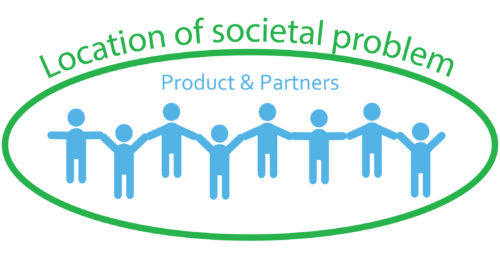
The focus on a particular set of issues in a place is essential for transdisciplinary research. Societal problems which involve human perceptions and behaviors have a geography associated with them, and this geography defines the relevant stakeholders. Place based research means that a shared problem literacy should be developed (e.g., environmental literacy for environmental problems). Place based research is inherently parochial, yet many researchers conducting place-based research will attempt to use various case studies to make generalizations and develop overarching theories.
3. Transdisciplinary research is time intensive.
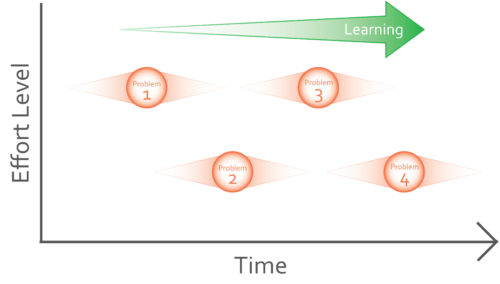
In many respects, there are no shortcuts for transdisciplinary research. Engaging with a diversity of partners requires time, and since trust-based relationships need to be developed, face time is needed, no matter how much virtual communication is used. Framing the problem, co-designing the research program and co-development and co-production all take time. In addition, these different phases need to be developed in sequence, rather than simultaneously moving forward. Many complex problems have taken decades to centuries to develop, and likewise, the solutions are likely to take considerable time to resolve.
4. The term 'transdisciplinary' relates more to academia than to research partners (sometimes called stakeholders).
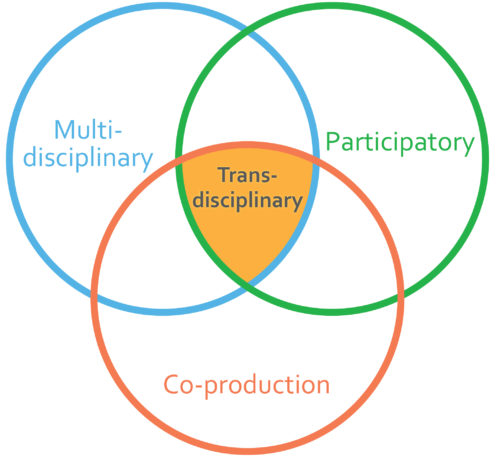
Academia is an ancient human endeavor, originating in the Middle Ages. This leads to some conservatism when it comes to changing common research practices, since the whole concept of disciplines is the way academia organizes itself as more knowledge is formed. Transdisciplinary research flies in the face of this mentality. The Greeks developed terminology that helps define transdisciplinary approaches, discussed in a previous blog spot. In particular, the words 'praxis' and 'phronesis' embody key transdisciplinary concepts. Praxis, defined as thoughtful and practical doing, is employed by transdisciplinary researchers. Phronesis, defined as practical wisdom, is what is being sought by transdisciplinary researchers. Research partners outside academia typically focus on problem solving, and the term 'transdisciplinary' does not resonate with them.
5. Transdisciplinary research requires well developed leadership skills.

Interpersonal skills which promote inclusiveness, communication, and empathy are key for working with partners from a variety of different fields possessing different values, sometimes referred to as 'soft skills'. The term 'soft' refers to the social sciences (sometimes distinguished from the 'hard' physical and natural sciences), but these skills are anything but soft; they tend to be difficult to learn and to employ. It can be quite dangerous to have a transdisciplinary researcher with inadequate leadership skills. Partners could become disenchanted and leave the partnership, even to the point of becoming more unlikely to participate in future problem-solving. Developing transdisciplinary leadership skills takes time and an apprenticeship period of participating in transdisciplinary projects before being the principal researcher is recommended.
6. Transdisciplinary research is intensely collaborative.
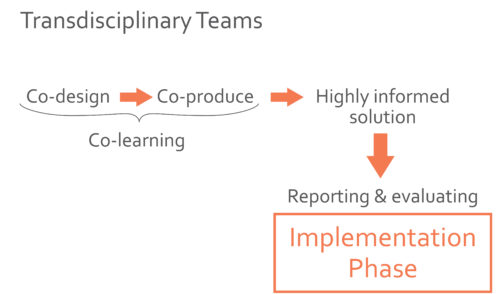
The very nature of transdisciplinary research is collaborative. When I produced a word cloud, based on responses of the Paris 2017 transdisciplinary workshop participants, the word 'collaboration' was the dominant term used to define transdisciplinary. The collaborations need to occur across scientific disciplines (e.g., anthropology and ecology), but also across academic disciplines and practitioner knowledge (e.g., engineering and indigenous knowledge). The intensity of the collaborations is a result of the consensus needed for co-design, co-development and co-creation of knowledge that requires productive working relationships. Learning to work with people with different disciplinary languages, different knowledge systems and different values is a challenge, intensifying the investment in the collaboration.
7. Transdisciplinary research merges multiple knowledge streams and different value systems to create new knowledge.
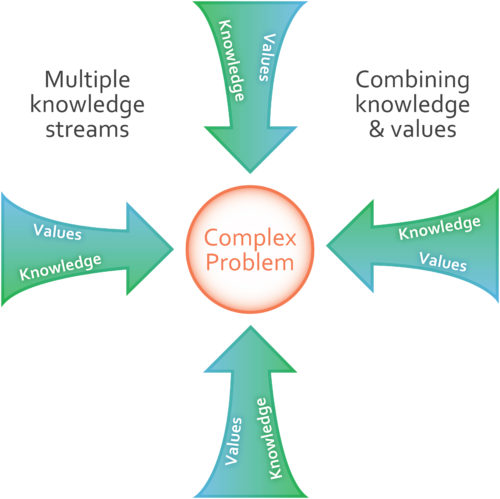
Accepting the validity of different perspectives that provide different knowledge streams is necessary for the merging of these knowledge sources. The integration of different types of knowledge is particularly difficult, but when it occurs, powerful new knowledge can be created. One of my favorite examples of merging indigenous knowledge with modern ecological results is the book "Words of the Lagoon: Fishing and marine lore in the Palau district of Micronesia" by Bob Johannes (1981). Johannes developed a trusted relationship with Palau fishers and compared their indigenous knowledge with ecological research findings. He found that the ecological research confirmed the indigenous knowledge, but the indigenous knowledge was much more complete. For a simple explanation of transdisciplinary, I like the one put forward by Carolina Adler: "Transdisciplinary research is an approach to understanding and solving societal problems by bringing together different knowledge streams." This definition emphasizes this last transdisciplinary literacy principle. A useful metaphor for what constitutes disciplinary vs. inter-disciplinary vs. multi-disciplinary vs. transdisciplinary is that of separate baskets of fruit vs. a fruit plate vs. fruit salad vs. a fruit smoothie.

About the author
Bill Dennison

Dr. Bill Dennison is a Professor of Marine Science and Vice President for Science Application at the University of Maryland Center for Environmental Science.
Next Post > IAN Returns to Honolulu for the Hawaiian Islands and the Remote Pacific Islands Coral Reef Report Cards Workshops
Comments
-
Vicki Pinkney-Atkinson 8 years ago
Dear Dr Dennison
Please can you help me how the concept of transdisciplinary research fits into multi-sectoral and intersectoral policy making and action?
I work in a not for profit organization in South Africa.
Kind regards
Vicki Pinkney-Atkinson -
Robert 8 years ago
Thank you for the Principle, how ever it seems to me that your principle are more of characteristics of TD.
-
Peter Dukes 7 years ago
Hi Bill
While Transdisciplinary Science is important, it can be a obsessive mantra for research funders, with the danger that they / we do not recognise that transdisciplinarity is only a means to an end, and not the end itself; and that not all good questions need a multidisciplinary approach. Collaboration of any kind takes time and particular attitudes and behaviours: so thank you for your excellent set of thoughts. I am using your terrific material to shape my own thinking; and will credit your blog if I replicate your material.

